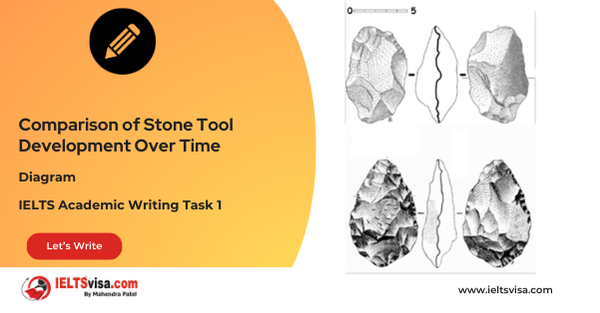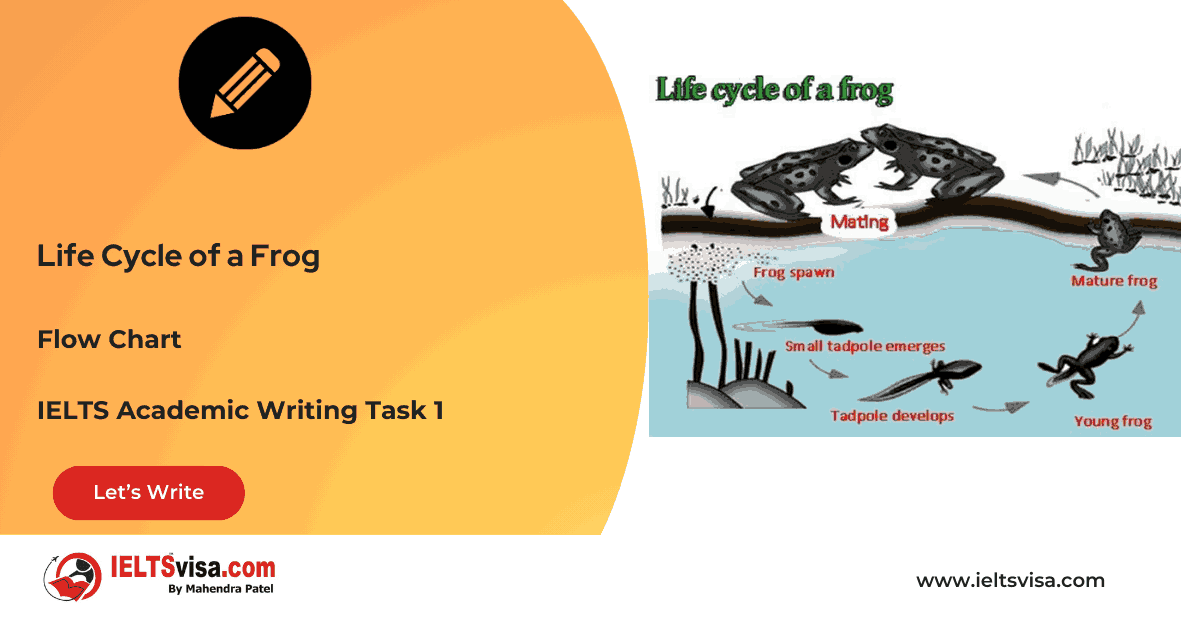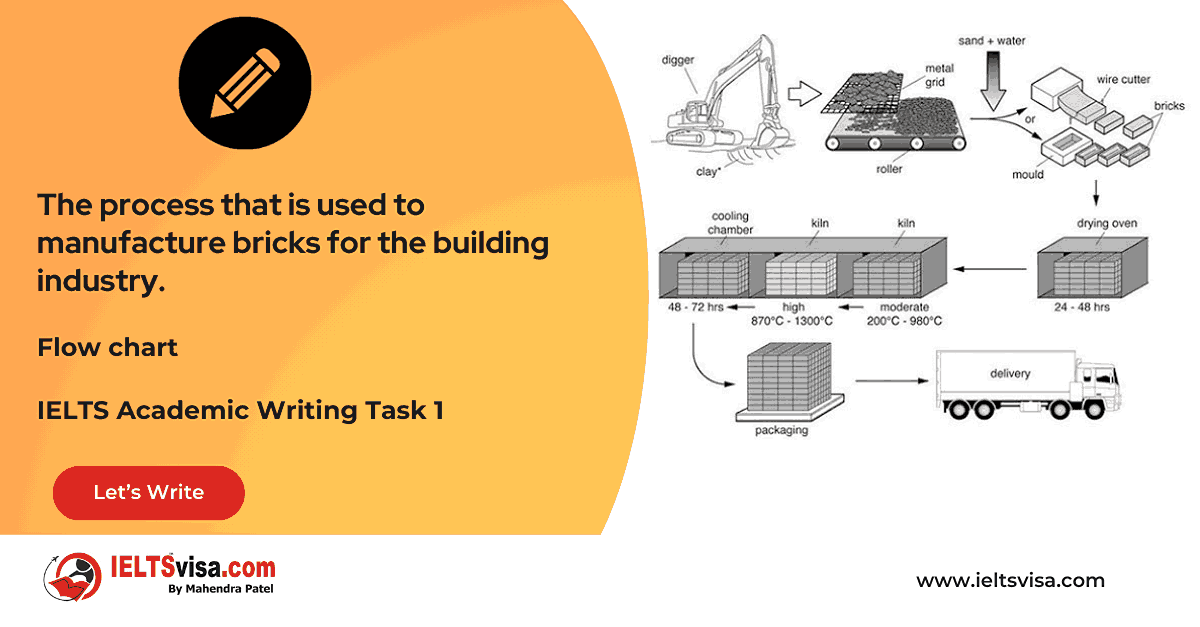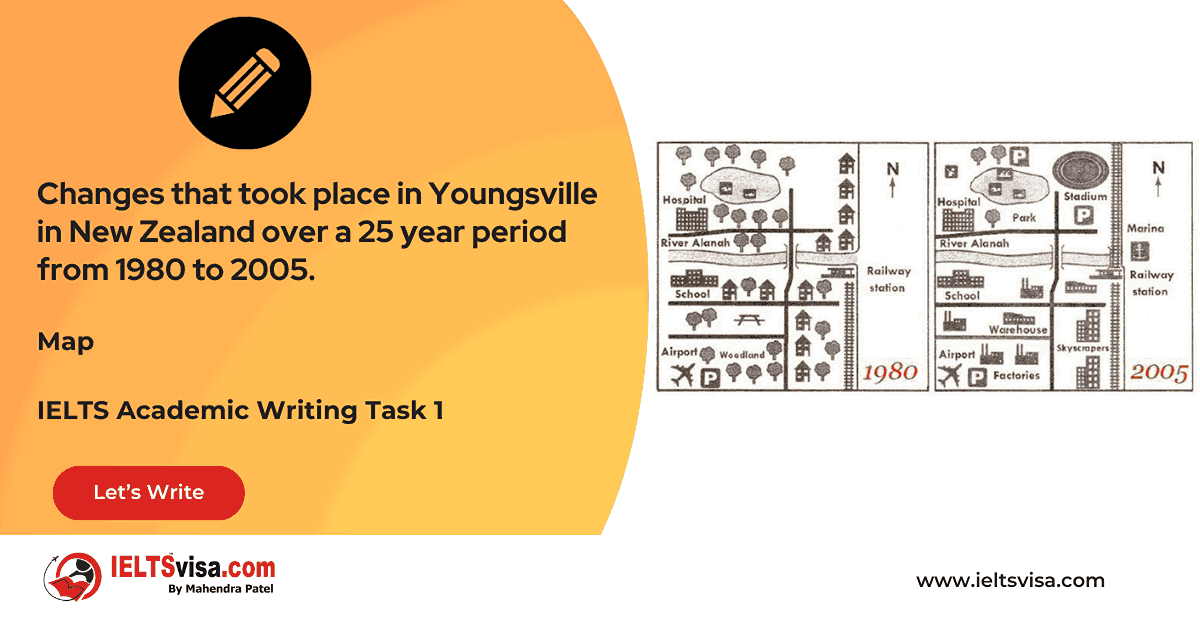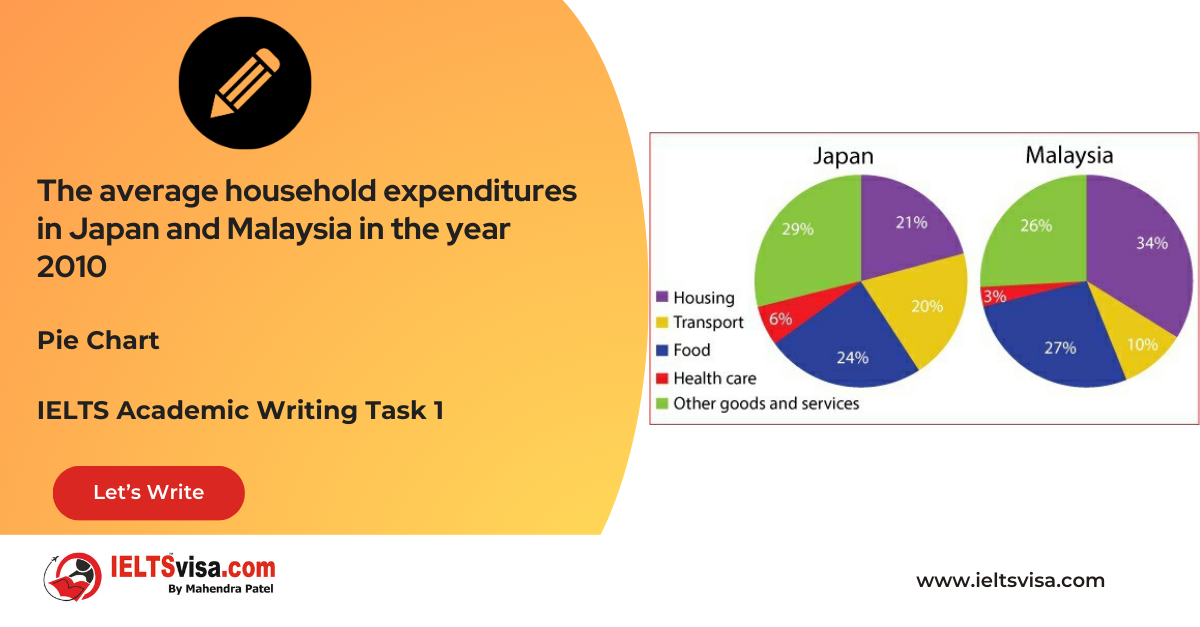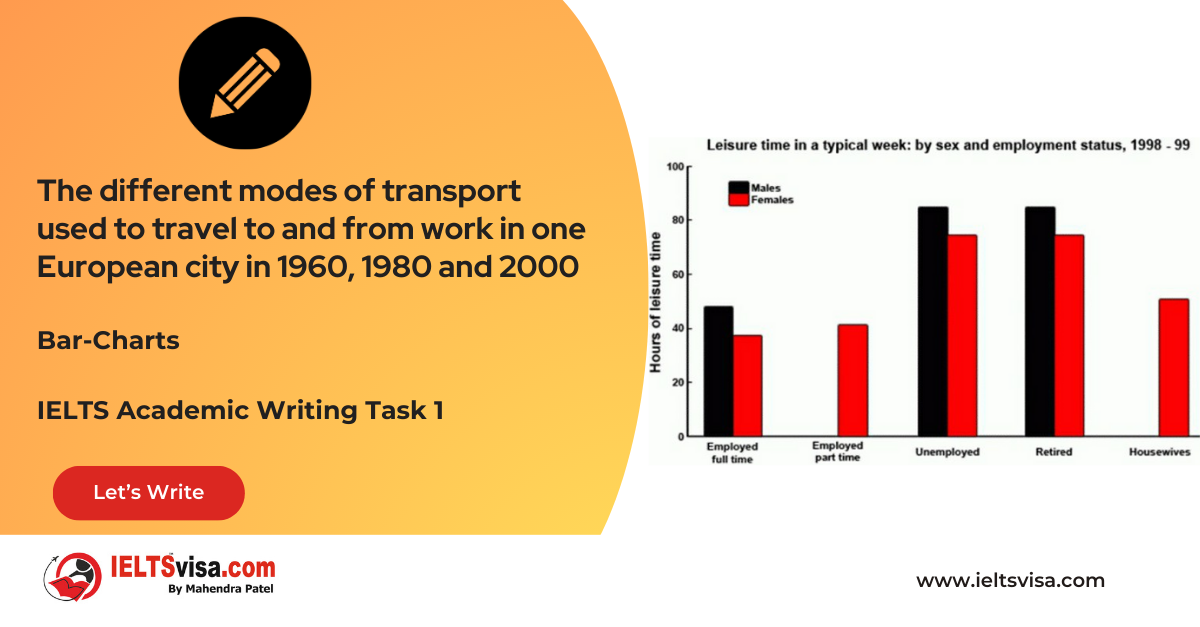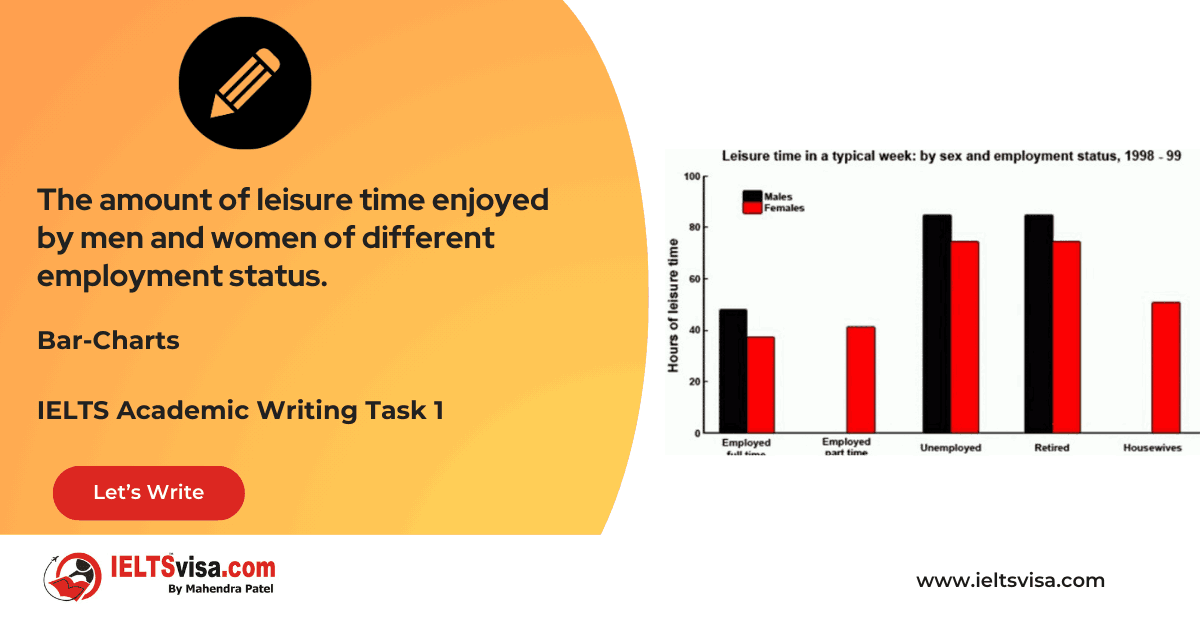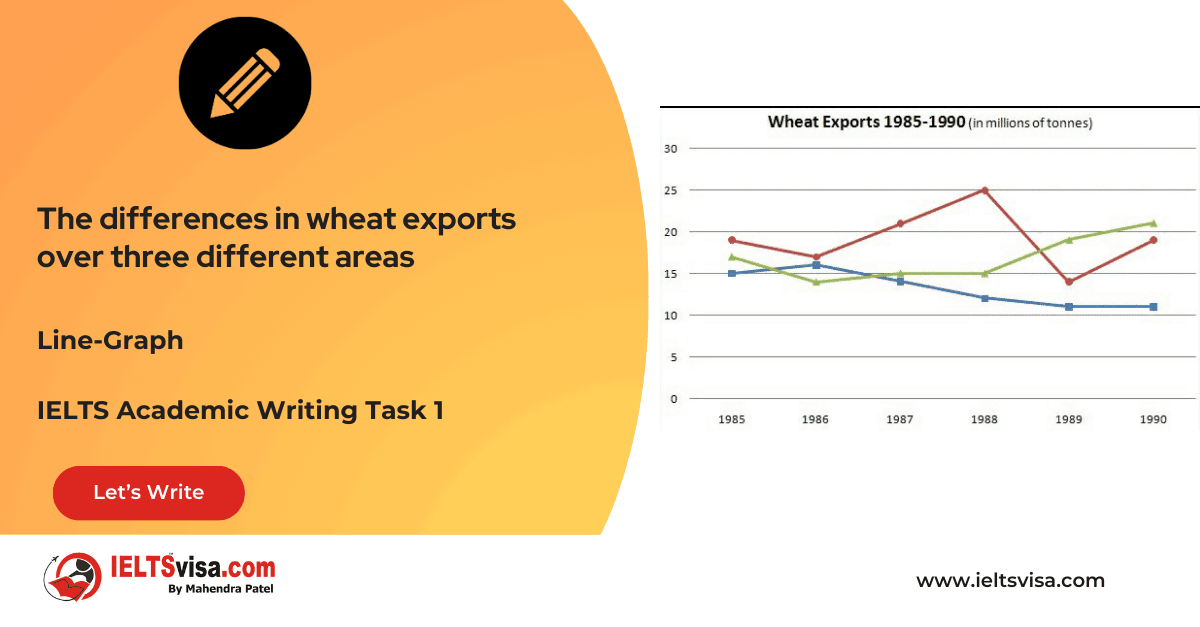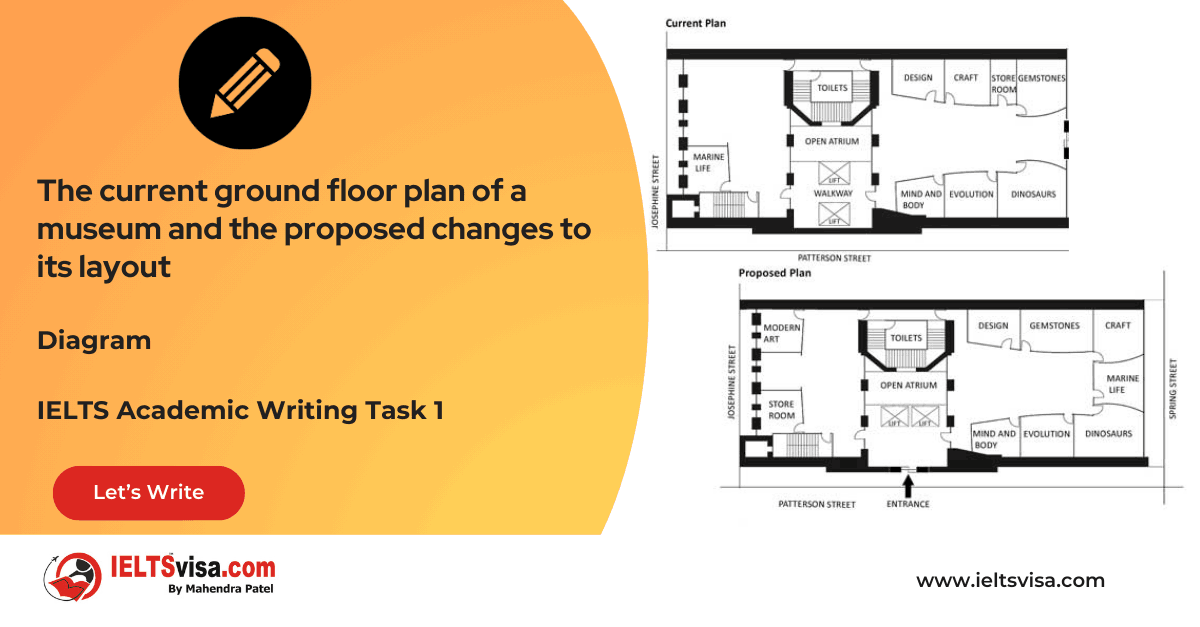Ranking Information
Lexical Resource & Grammatical Range and AccuracyIELTS Academic Writing Task 1
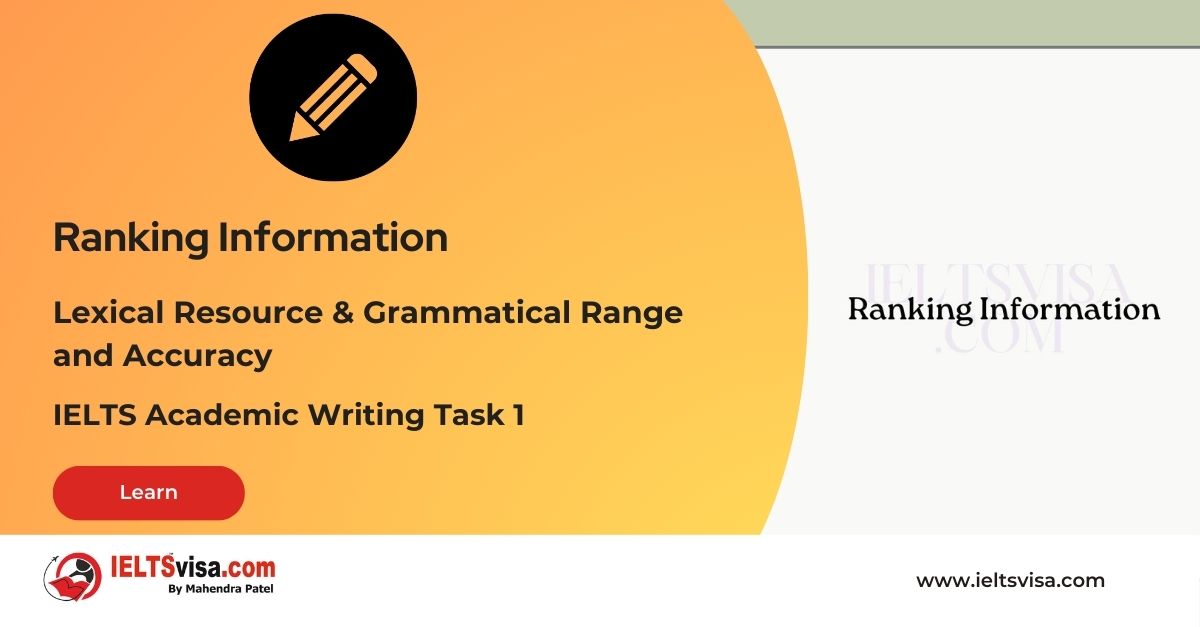
In the IELTS Academic Writing Task 1, effectively ranking information is crucial for demonstrating a strong command of Lexical Resource and Grammatical Range and Accuracy.
This task requires you to describe and interpret visual information, such as graphs, charts, and diagrams, which often involve presenting data in a ranked order.
By using appropriate vocabulary and structures to rank information, you can accurately convey the relative importance or magnitude of different elements, showcasing your language proficiency and enhancing your overall performance.
This article will explore the importance of ranking information in Task 1, accompanied by examples and answers to help you excel.
1. Vocabulary for Ranking:
When ranking information in Task 1, it is important to use precise and specific vocabulary to accurately convey the relative positions or levels of different elements. Here are some useful vocabulary words for ranking:
a. Highest:
Indicates the topmost position or the element with the greatest value. Example: Country X has the highest GDP among the surveyed nations.
b. Lowest:
Denotes the bottommost position or the element with the smallest value.
Example: The city has the lowest crime rate in the region.
c. Second highest/lowest:
Used to indicate the element that comes after the highest or lowest position.
Example: The company’s profits were the second highest in the industry.
2. Comparative Structures for Ranking:
In addition to vocabulary, you can use comparative structures to effectively rank information. Here are some structures and phrases for ranking:
a. Rank First/Second/Third:
Used to explicitly state the position of an element in a ranking.
Example: The country ranked first in terms of renewable energy usage.
b. The Most/Mostly:
Indicates that a particular element or category has the highest value or occurs most frequently.
Example: The most common mode of transportation in the city is public transit.
c. More/Less Than:
Used to compare the relative quantities or values of different elements.
Example: The sales of Product A were more than double the sales of Product B.
Example Answer:
Original Sentence: The number of visitors in Park A increased.
Original Sentence: The number of visitors in Park B decreased.
Revised Sentence: Park A had the highest number of visitors, while Park B experienced the lowest number of visitors.
In the revised sentence, precise vocabulary and comparative structures are used to rank the number of visitors in Park A and Park B, emphasizing the difference in their popularity.
In conclusion, effectively ranking information in IELTS Academic Writing Task 1 is crucial for showcasing your Lexical Resource and Grammatical Range and Accuracy.
By using specific vocabulary words such as “highest,” “lowest,” and “second highest/lowest” and employing comparative structures like “rank first/second/third,” “the most/mostly,” and “more/less than,” you can accurately convey the relative positions or levels of different elements.
With consistent practice and attention to detail, you will excel in Task 1 and achieve success in your IELTS examination.








Our Books
Master IELTS Speaking Part 1
IELTS Writing Task 1 Book
IELTS Writing Task 2 Book
Practice IELTS Other Modules
IELTS Listening
The IELTS Listening test assesses how well you can understand spoken English in various contexts. It lasts about 30 minutes and is divided into four sections with a total of 40 questions. The listening tasks become increasingly difficult as the test progresses.
IELTS Academic Reading
The IELTS Academic Reading section assesses your ability to understand and interpret a variety of texts in academic settings. It is designed to evaluate a range of reading skills, including skimming for gist, reading for main ideas, reading for detail, understanding inferences, and recognizing a writer's opinions and arguments.
IELTS Speaking
The IELTS Speaking test assesses your ability to communicate in English on everyday topics. It lasts 11-14 minutes and consists of three parts: introduction, cue card, and a discussion based on the cue card topic.
IELTS General Reading
IELTS General Reading tests your ability to understand and interpret various types of texts. Here are some key areas and types of content you can expect to encounter in the reading section, along with tips for effective preparation.
IELTS Academic Writing Task 1
In IELTS Academic Writing Task 1, you are presented with a visual representation of information, such as graphs, charts, tables, or diagrams, and you are required to summarize, compare, or explain the data in your own words.
IELTS General Writing Task 1
In IELTS General Writing Task 1, you are required to write a letter based on a given situation. The letter can be formal, semi-formal, or informal, depending on the prompt. Here’s a breakdown of the key components to include in your letter
IELTS Academic Writing Task 2
In IELTS Academic Writing Task 2, you are required to write an essay in response to a question or topic. Here’s a guide to help you understand the essential elements of this task
IELTS Exam Tips
To succeed in the IELTS exam, practice regularly, familiarize yourself with the test format, improve your vocabulary, develop time management skills, and take mock tests to build confidence.
Grammer for IELTS
Grammar is the foundation of effective communication in English. Understanding tense usage, subject-verb agreement, and sentence structure enhances clarity and coherence in writing and speaking.
Vocabulary for IELTS
Vocabulary plays a crucial role in the IELTS (International English Language Testing System) exam, especially in the Speaking and Writing sections. Here’s an overview of why vocabulary is important and how it impacts your performance
RECENT IELTS SAMPLES QUESTIONS AND ANSWERS
Task 1 – Diagram – Comparison of Stone Tool Development Over Time
20:00 Start Pause Stop [df_adh_heading title_infix="IELTS Writing Task 1 Question" use_divider="on"...
Task 1 – Flow chart -Life Cycle of a Frog
20:00 Start Pause Stop [df_adh_heading title_infix="IELTS Writing Task 1 Question" use_divider="on"...
Task 1 – Flow chart -The process that is used to manufacture bricks for the building industry.
20:00 Start Pause Stop [df_adh_heading title_infix="IELTS Writing Task 1 Question" use_divider="on"...
Task 1 – Map – Changes that took place in Youngsville in New Zealand over a 25 year period from 1980 to 2005.
20:00 Start Pause Stop [df_adh_heading title_infix="IELTS Writing Task 1 Question" use_divider="on"...
Task 1 – Pie Chart – The average household expenditures in Japan and Malaysia in the year 2010
20:00 Start Pause Stop [df_adh_heading title_infix="IELTS Writing Task 1 Question" use_divider="on"...
Task 1 – Bar Graph – The different modes of transport used to travel to and from work in one European city in 1960, 1980 and 2000
20:00 Start Pause Stop [df_adh_heading title_infix="IELTS Writing Task 1 Question" use_divider="on"...
Task 1 – Bar Graph – The amount of leisure time enjoyed by men and women of different employment status
20:00 Start Pause Stop [df_adh_heading title_infix="IELTS Writing Task 1 Question" use_divider="on"...
Task 1 – Line Graph – The differences in wheat exports over three different areas
20:00 Start Pause Stop [df_adh_heading title_infix="IELTS Writing Task 1 Question" use_divider="on"...
Task 1 – Diagram – The current ground floor plan of a museum and the proposed changes to its layout
20:00 Start Pause Stop [df_adh_heading title_infix="IELTS Writing Task 1 Question" use_divider="on"...

